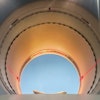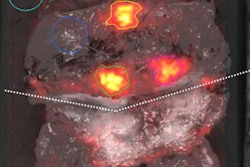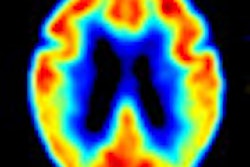A novel optical imaging technique called Cerenkov luminescence imaging (CLI) could lead to faster and more cost-effective development of radiopharmaceuticals for diagnosing and treating cancer and other conditions, according to a study published today in the July issue of the Journal of Nuclear Medicine.
Combining optical imaging with nuclear medicine presents a new path for imaging medical isotopes, said study co-author Jan Grimm, MD, PhD, a professor and physician at Memorial Sloan-Kettering Cancer Center and Weill Cornell Medical Center in New York City. The technique provides optical imaging with an array of approved nuclear tracers in clinical use today, which can be used immediately, as opposed to fluorescent dyes, he added.
Optical imaging is a molecular imaging procedure in which light-producing molecules designed to attach to specific cells or molecules are injected into the bloodstream and are then detected by an optical imaging device. It usually requires either excitation by an external light source or by a biological process.
Cerenkov imaging produces the light from the radioactivity, so no external illumination is needed.
The researchers used CLI and PET to visualize tumor-bearing mice. The results indicate that CLI visualizes radiotracer uptake in vivo, and the resulting decrease of light over time correlates with the radioactive decay of the injected tracer.
The technique also can image radionuclides that do not emit either positrons or gamma rays, which is a current limitation for nuclear imaging modalities. CLI brings to light isotopes that could not be visualized previously.
Additionally, according to the study, optical imaging techniques show promise for endoscopy and surgery because of the ability to visualize tumor lesions, which could provide real-time information to surgeons and help guide operations.
Related Reading
Novel agents and new tools chart molecular imaging's future, June 8, 2010
SNM summit advances molecular imaging, February 2, 2010
Copyright © 2010 AuntMinnie.com




















